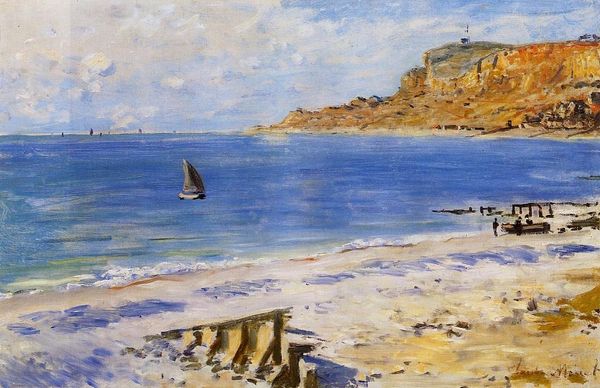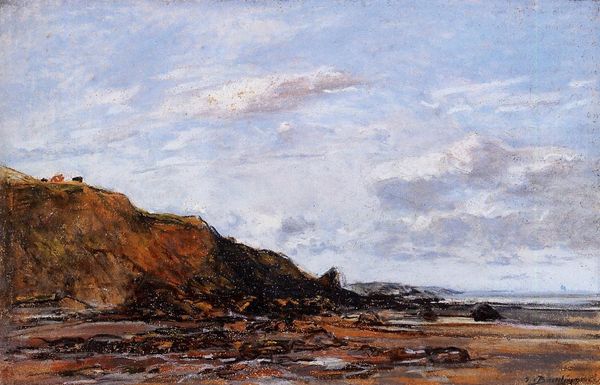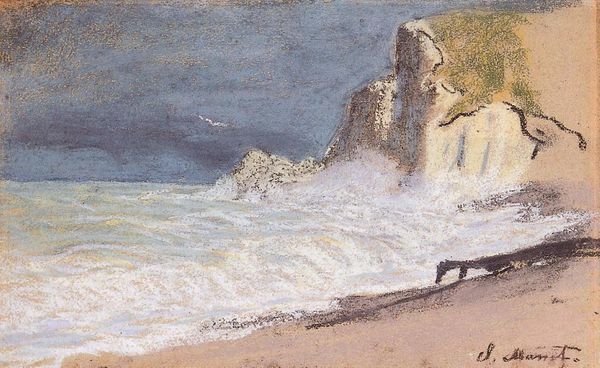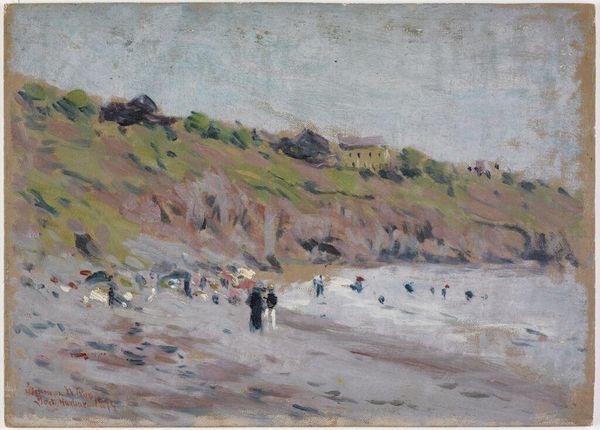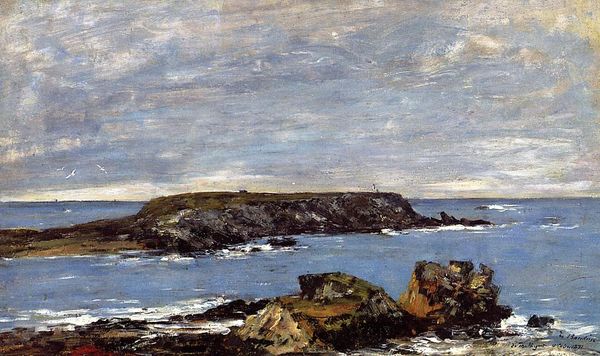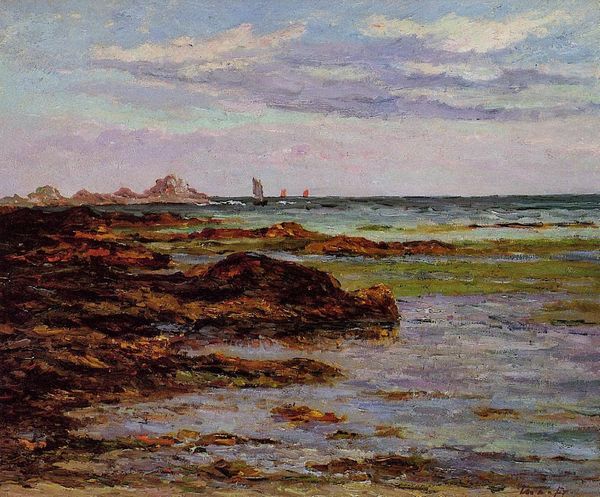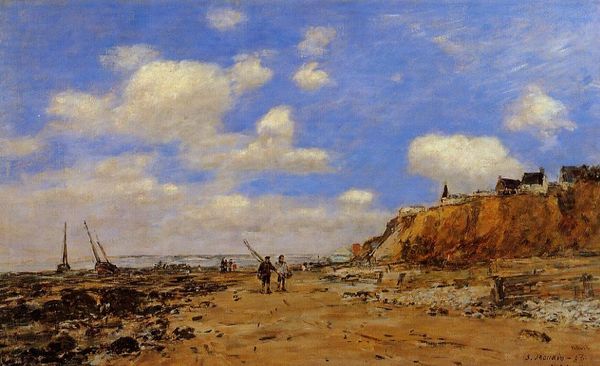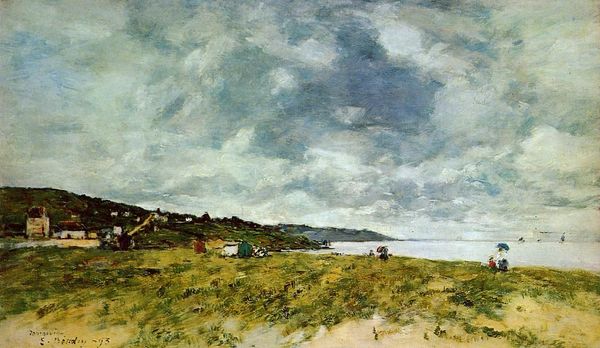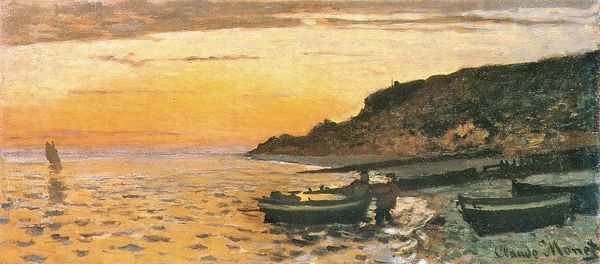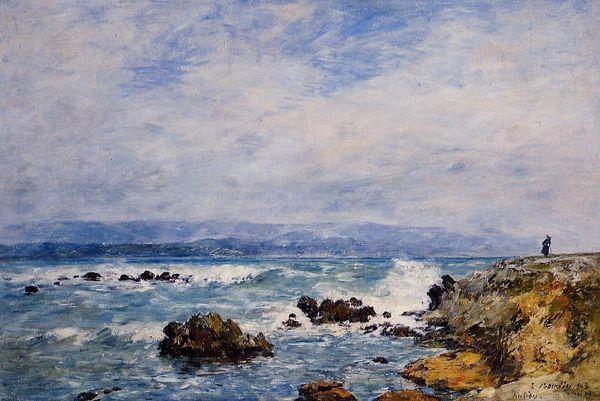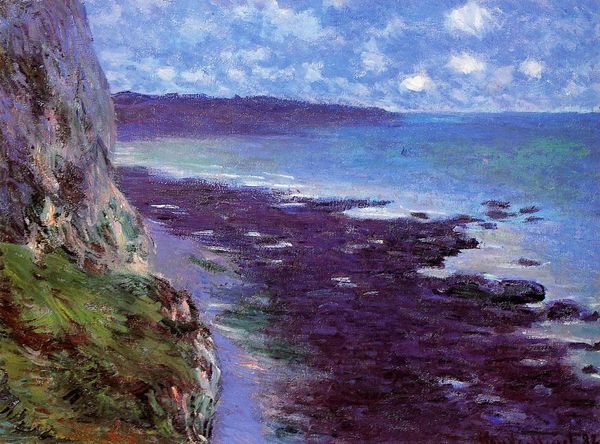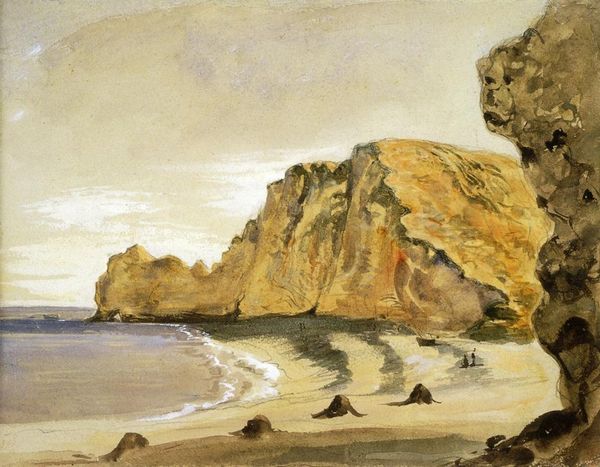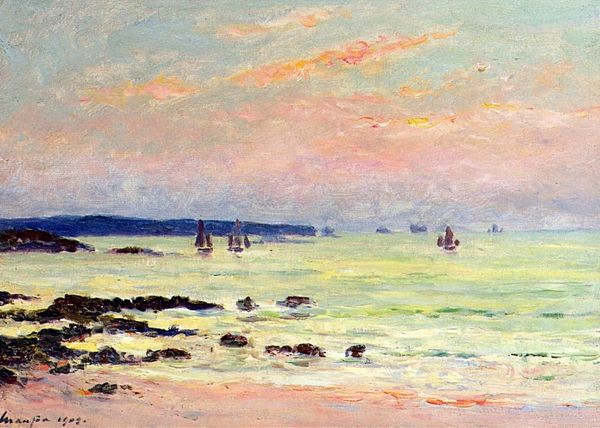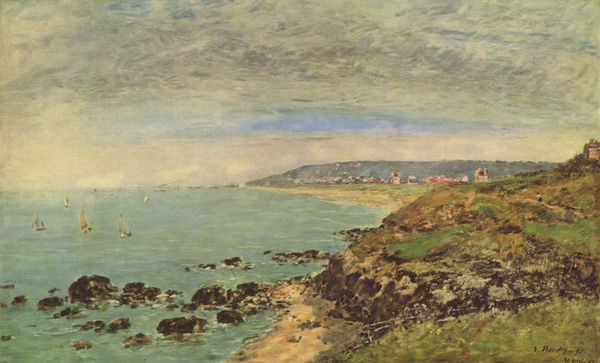
Copyright: Public domain
Curator: Here we have Claude Monet’s "Cliff at Sainte-Adresse," painted in 1873. It depicts a rugged coastline, captured with his signature fleeting brushstrokes. Editor: The initial feel is of a moody tranquility. There's something subdued in the colors, a calmness to the scene that's instantly inviting even as the cliffside looks a bit ominous. Curator: Indeed. Monet’s plein-air approach is evident. Imagine him there, easel set up, battling the elements to capture the immediate impression of the light and atmosphere, not concerning himself with hyper-realism. Editor: Exactly. And look at the materiality of those rocks—rough hewn, chunky strokes, like he’s building with pigment as much as painting with it. It’s fascinating how the labor involved is so visible here, not trying to disguise the hand of the artist in the process. Did he, do you think, see some kind of reflection of his own struggle, the artist at work, in these formations he immortalized? Curator: Well, the way he used color, with those blues melding into greys and muted yellows, speaks to that interplay of reflection and reality. He’s showing us his emotional state as much as a factual record. Those strokes, broken and vibrant, feel to me like hope breaking through doubt—like the romantic poets, perhaps, but working on canvas, with color. Editor: I wonder, too, about access to the cliffs themselves, about whose labor it was to quarry stone or build anything up there. Even leisure had a cost and infrastructure to maintain, literally. The availability of oil paints, manufactured on an industrial scale, certainly changed the landscape for artists, liberating them from the studio to tackle this kind of project with relatively easy-to-source supplies. Curator: Right. Painting en plein-air certainly brought with it a freedom to confront both nature's awe and humanity's fleeting mark, offering a chance, as we are still doing now, to try and reflect what the whole endeavor of capturing reality truly signifies. Editor: A worthy consideration! This piece does offer much when examined in light of its materials and societal elements of the era.
Comments
No comments
Be the first to comment and join the conversation on the ultimate creative platform.
